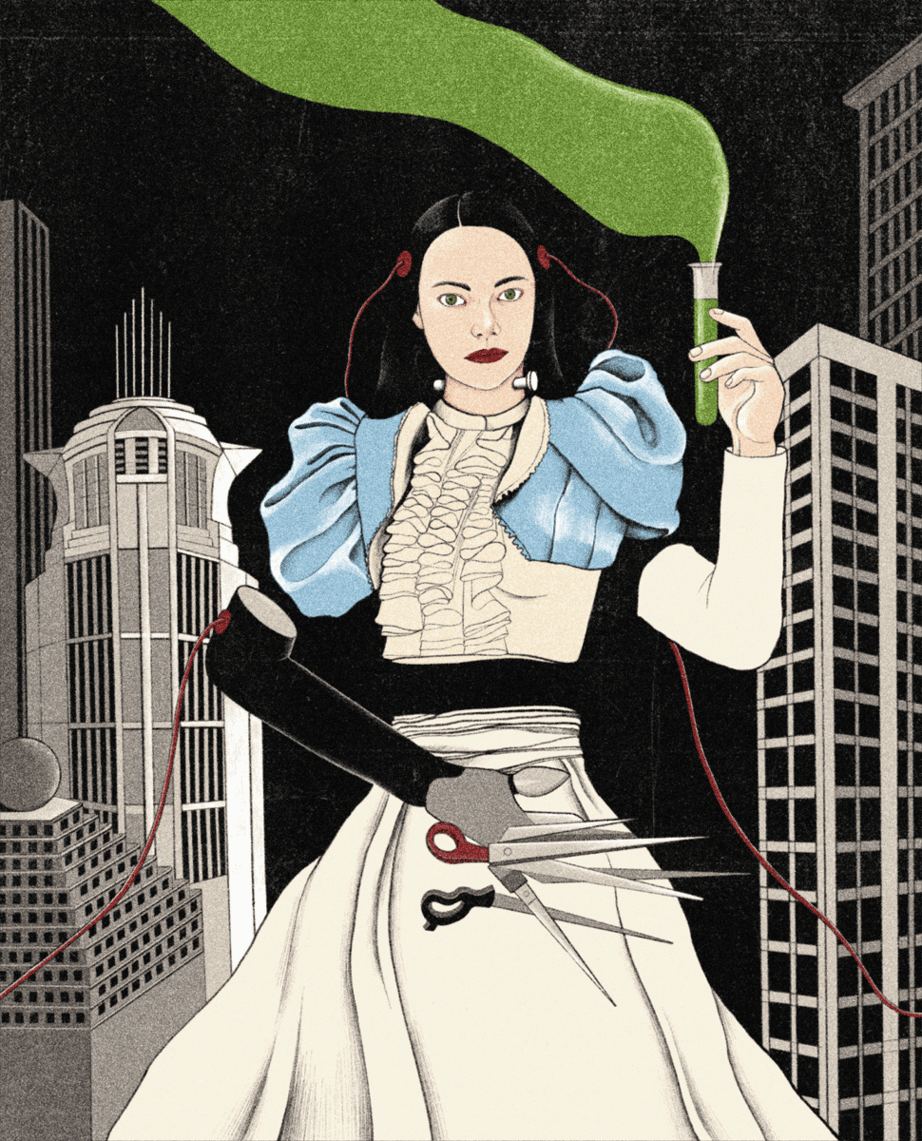Dangerous liaisons
- Share via
“IT actually was a dark and stormy night,” is how Dorothy and Thomas Hoobler begin “The Monsters,” their account of that momentous evening in the summer of 1816 when five young people, gathered at a villa on Lake Geneva in Switzerland, embarked on a friendly competition to see who could write the best ghost story.
The suggestion came from their 28-year-old host, Lord Byron, already one of the most famous figures in an age when a poet could enjoy the celebrity status of a modern rock star. Women threw themselves at Byron, and he never seems to have said no. Such had been the case that spring, when he received a mash note from and met 18-year-old Claire Clairmont, the younger stepsister of Mary Wollstonecraft Godwin. Unbeknown to Byron, Clairmont became pregnant with his child and prevailed upon Mary and Mary’s then-lover and future husband, the enchanting but still relatively little-known poet Percy Bysshe Shelley, to go with them to visit Byron in Switzerland.
Rich and glamorous though he was, Byron worried constantly about his propensity to gain weight and attempted to control the problem with his own primitive version of a diet (potatoes and vinegar). He had in tow his personal physician, Dr. John Polidori, a gifted but unsettled young man with literary ambitions and a sad case of unrequited adoration for his patient.
As the Hooblers tell us, Byron had fled England in the wake of a scandal connected with the breakup of his marriage and the (true) rumors of an incestuous affair with his half sister Augusta. At this point, he was no longer interested in Claire, if ever he had been, but he had a great deal of respect and liking for Shelley. And although Byron, unlike Shelley, did not much enjoy the company of women, except between the sheets, he seems to have had some regard for Clairmont’s thoughtful and erudite 19-year-old stepsister, who two years earlier had run off with Shelley (who was then still married to his earlier love, Harriet Westbrook).
Mary was the daughter of two famous people. Her father was philosopher William Godwin, whose “Political Justice” was a major influence on the radical thinkers of his time. Sadly, she never knew her mother, Mary Wollstonecraft, the pioneering feminist author of “A Vindication of the Rights of Woman,” who died of puerperal fever shortly after giving birth to her in 1797.
Like Godwin and Wollstonecraft, Shelley and Mary believed in free love, but they found it a lot easier to accept in theory than in practice. It was only after poor Westbrook drowned herself in 1816 that Shelley and Mary were able to officially wed, much to the delight of Mary’s supposedly unconventional father: Despite his professed contempt for established institutions, Godwin had been furious over his daughter’s illicit liaison. His moral outrage, however, had not prevented him from accepting -- and continuing to request -- large sums of money from Shelley, even as he was busy reviling him.
Although it’s easy to imagine Shelley as a well-meaning, foolishly impractical, sometimes even delusional young idealist, which is pretty much how the Hooblers portray him, this would be a serious mistake. From the testimony of all who knew him, it’s clear there was something special about him, something far more emotionally appealing and intellectually engaging than the qualities we’ve since come to associate with starry-eyed radicals. And from the extraordinary body of work that he produced, rich with insights both subtle and profound, we have some idea of the magnitude of his mind.
Shelley’s encounter with the awe-inspiring Alpine scenery in 1816 resulted in the writing of one of his most important early poems, “Mont Blanc,” which the Hooblers don’t even bother to mention. Confronting the mountain’s icy sublimity and the sheer power of the forces encompassed in it, the poet avers that only the human imagination is capable of endowing this natural phenomenon with meaning:
And what were thou, and earth, and stars, and sea,
If to the human mind’s imaginings
Silence and solitude were vacancy?
But on that dark and stormy night at Byron’s villa, neither of the great Romantic poets seems to have come up with a viable ghost story. Nor did Claire. But Polidori produced “The Vampyre,” which the Hooblers describe as “the first and most influential novel about a human vampire ... the model for all subsequent authors in the genre, from Bram Stoker to Anne Rice.”
Undoubtedly, however, the most significant work to come out of the challenge was Mary Shelley’s far more original “Frankenstein,” which not only proved to be an equally enduring myth, but also holds the distinction of being the first science-fiction novel.
Although Polidori had taken his inspiration from ancient folklore, Mary Shelley took hers from some of the most cutting-edge scientific experiments of her time. Even at her young age, she already had the skepticism and prescience to worry about where “progress” of this sort might inadvertently lead. Victor Frankenstein means well, but no sooner does he see his gigantic creation come to life than he recoils in horror. The poor monster is doomed to go through life seeking love but never finding it, a process that transforms him from a kindly, well-meaning creature into a brutally vengeful one.
It’s not too big a stretch to see the seductive, aristocratic, ultimately predatory and, in many ways, heartless Byron as the model for Polidori’s vampire. But who, if any, real-life monster or monsters inspired Mary Shelley’s well-meaning but deeply flawed scientist and the lonely, heartbroken, increasingly dangerous creature he brought to life? The Hooblers propose Shelley and Godwin, portraying them as radical thinkers whose single-minded pursuit of their ideals led to disastrous real-life consequences.
Judging from the coldly sententious letters he wrote to Mary after the deaths of two of her children and then her husband, Godwin certainly seems to have been one of the least emotionally supportive fathers imaginable. Mary’s own childhood in a household with a disengaged father and a stepmother who disliked her may well have helped her sympathize with the plight of the unloved, motherless monster.
Understandably, the Hooblers focus primarily on their announced subject of “Frankenstein,” giving some attention to “The Vampyre.” Less excusably, they quote and discuss Byron’s poetry, but hardly any of Shelley’s. Although in the poets’ brief lifetimes (Shelley died in 1822, barely a month before turning 30, Byron two years later at age 36) Byron was considered the greater poet, literary history has since moved on. The Hooblers seem cheerfully oblivious that critics of our time, like Harold Bloom, rank Shelley’s oeuvre above Byron’s, and the poetry of both above Mary Shelley’s stagily written, although indubitably original, novel.
Even in evaluating “Frankenstein,” the authors somewhat miss the mark, so intent are they in seeking out melodramatic parallels between the personal tribulations that Mary endured and the horrifying tale she created. Certainly, Mary’s experiences informed her writing. But what makes “Frankenstein” a classic is the ingeniousness of her inventions, the acuity of her insights and the scope of her imagination. *
More to Read
The biggest entertainment stories
Get our big stories about Hollywood, film, television, music, arts, culture and more right in your inbox as soon as they publish.
You may occasionally receive promotional content from the Los Angeles Times.










